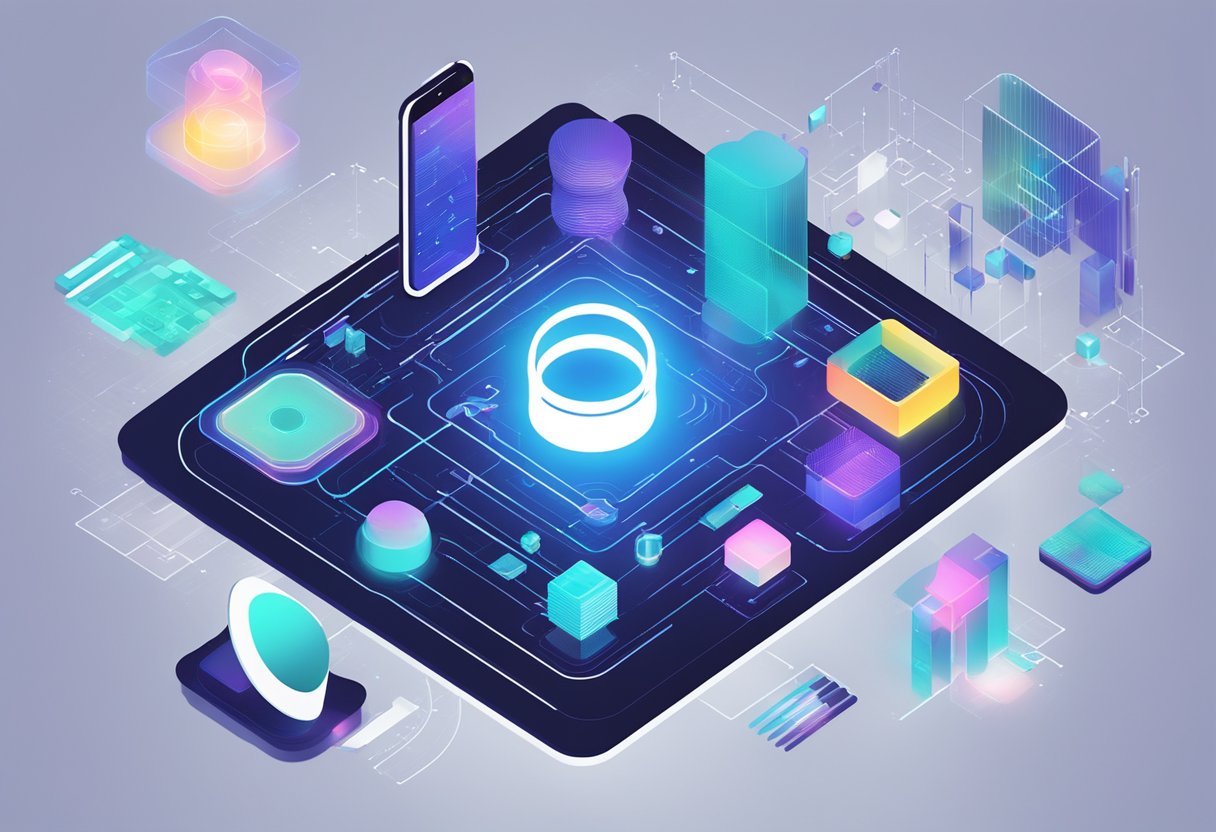OpenAI has established itself as a leader in the field of artificial intelligence (AI) research thanks to its constant pursuit of excellence, commitment to moral AI, and game-changing breakthroughs.
Founded in 2015 by a group of tech luminaries, including Elon Musk and Sam Altman, OpenAI has since grown into a powerhouse of AI research and development, with a focus on creating safe and beneficial AI that benefits all of humanity.
The evolution of OpenAI’s AI models has been nothing short of remarkable.
From its early days of developing deep learning algorithms to its current focus on developing artificial general intelligence (AGI), OpenAI has consistently pushed the boundaries of what is possible in the field of AI.
Today, OpenAI’s research spans a wide range of domains, from natural language processing and computer vision to robotics and reinforcement learning.
OpenAI’s approach to AI research and development is driven by its mission to ensure that AGI systems that are generally smarter than humans benefit all of humanity.
If AGI is successfully created, this technology could help us elevate humanity by increasing abundance, turbocharging the global economy, and aiding in the discovery of new scientific knowledge that changes the limits of possibility.
OpenAI’s commitment to ethical and responsible AI development is a key factor in its success, as it seeks to create AI that is safe, transparent, and beneficial to society.
Key Takeaways
- OpenAI is a leader in AI research and development, with a focus on creating safe and beneficial AI that benefits all of humanity.
- OpenAI’s research spans a wide range of domains, from natural language processing and computer vision to robotics and reinforcement learning.
- OpenAI’s commitment to ethical and responsible AI development is a key factor in its success, as it seeks to create AI that is safe, transparent, and beneficial to society.
Evolution of OpenAI’s AI Models

OpenAI has been at the forefront of the development of generative models, which are capable of generating text, images, and even music. Two of its most notable models are GPT-3 and DALL-E. Let’s take a look at the evolution of these models.
From GPT-3 to GPT-4
GPT-3, the third iteration of the Generative Pre-trained Transformer model, was released in 2020. It was a significant improvement over its predecessor, GPT-2, in terms of the quality and coherence of the text it generated.
GPT-3 was trained on a massive amount of data and had 175 billion parameters, making it one of the largest language models ever created.
OpenAI has already announced that it is working on the next iteration of the GPT series, GPT-4.
While details are scarce, it is expected to be even more powerful than its predecessor, with even more parameters and capabilities.
The Development of DALL-E and CLIP
DALL-E is a neural network that can generate images from textual descriptions. It was released by OpenAI in January 2021 and quickly gained attention for its ability to create surreal and imaginative images.
DALL-E was trained on a dataset of text and image pairs, allowing it to learn the relationship between the two.
CLIP, on the other hand, is a neural network that can understand both text and images.
It was trained on a massive dataset of images and their associated captions, allowing it to learn to associate images with words and concepts.
CLIP has been used for a variety of tasks, including image classification and image generation.
OpenAI’s work on DALL-E and CLIP represents a significant step forward in the development of generative models. These models have the potential to revolutionize a wide range of industries, from art and design to healthcare and education.
OpenAI’s Approach to AI Research and Development
OpenAI is a research organization that is dedicated to advancing the field of artificial intelligence (AI) through cutting-edge research and development.
Their approach to AI research and development is based on the principles of transparency, collaboration, and innovation.
Research in Machine Learning and Deep Learning
OpenAI’s research in machine learning and deep learning is focused on developing algorithms that can learn from large datasets and make predictions based on that data.
They have developed several state-of-the-art deep learning models, including GPT-3, which is one of the most advanced language models in the world.
OpenAI’s machine learning and deep learning research is also focused on developing algorithms that can learn from fewer examples.
This is important because it makes it possible to train models on smaller datasets, which can be more cost-effective and more accessible to researchers and developers.
Reinforcement Learning and Feedback Mechanisms
OpenAI’s research in reinforcement learning is focused on developing algorithms that can learn from feedback.
This is important because it makes it possible to train models on tasks that are difficult to define in terms of a clear objective function.
OpenAI’s reinforcement learning research is also focused on developing algorithms that can learn from human feedback.
This is important because it makes it possible to train models on tasks that require human-level intelligence, such as natural language understanding and decision-making.
The Pursuit of Artificial General Intelligence
OpenAI is a research organization that aims to create artificial general intelligence (AGI) that benefits humanity. AGI refers to AI systems that are generally smarter than humans and can understand, learn, and apply intelligence across a broad spectrum of tasks.
The pursuit of AGI is a significant and challenging goal that requires balancing innovation with AI safety and ethical considerations.
Balancing Innovation with AI Safety
OpenAI is committed to developing AGI that is safe and beneficial to humanity.
The organization recognizes that AGI could have significant impacts on society, and it is essential to ensure that these impacts are positive.
Therefore, OpenAI is focused on balancing innovation with AI safety to ensure that AGI is developed responsibly and ethically.
Innovation is crucial to the development of AGI, but it must be done in a way that does not compromise safety.
OpenAI is working to create AI systems that are transparent, interpretable, and robust.
These systems should be able to explain their decisions and actions, so humans can understand them. Additionally, they should be able to operate safely in complex and unpredictable environments.
Ethical Considerations and Human Values
OpenAI recognizes that the development of AGI raises ethical considerations and questions about human values.
Therefore, the organization is committed to exploring these issues and ensuring that AGI is developed in a way that aligns with human values.
Ethical considerations include questions about the impact of AGI on society, the potential for misuse, and the fairness of its deployment.
OpenAI is working to address these concerns by engaging with policymakers, academics, and the public to discuss the implications of AGI.
Human values are also essential in the development of AGI.
OpenAI recognizes that AGI should be aligned with human values and should not be developed in a way that goes against them.
Therefore, the organization is working to ensure that AGI is developed with transparency, accountability, and fairness.
Regulatory and Ethical Landscape of AI
Regulations and Consensus
As the development of artificial intelligence (AI) continues to progress at a rapid pace, the need for regulatory frameworks and ethical guidelines becomes increasingly important. OpenAI is one of the leading organizations that is shaping the regulatory and ethical landscape of AI.
Currently, there is no global consensus on the regulation of AI. However, OpenAI has taken steps to promote responsible AI development and has called for the creation of international regulatory frameworks.
OpenAI has also released several ethical guidelines for AI development, which include principles like transparency, fairness, and safety.
In addition to OpenAI’s efforts, other organizations and governments are also working to establish regulatory frameworks for AI.
For instance, the European Union has released guidelines for trustworthy AI, and the United States has established the National Artificial Intelligence Initiative Office to coordinate federal AI research and development efforts.
Data Privacy and Responsibility
Another important aspect of the regulatory and ethical landscape of AI is data privacy and responsibility.
AI systems rely on large amounts of data to learn and make decisions. However, the use of personal data raises concerns about privacy and the potential for bias and discrimination.
OpenAI has recognized the importance of data privacy and responsibility and has taken steps to address these issues.
For example, OpenAI has released a dataset called GPT-2 that is designed to protect user privacy by removing personal information.
OpenAI has also called for greater transparency in AI systems to ensure that they are not biased or discriminatory.
Other organizations and governments are also taking steps to address data privacy and responsibility in AI.
For example, the General Data Protection Regulation (GDPR) in Europe requires companies to obtain user consent for the use of personal data and gives users the right to access and delete their data.
Similarly, the California Consumer Privacy Act (CCPA) in the United States gives consumers the right to know what personal information is being collected about them and the right to request that it be deleted.
OpenAI’s Impact on Society and Industry
OpenAI is a research organization that is dedicated to advancing artificial intelligence in an ethical and responsible manner.
Their work has had a significant impact on society and industry, particularly in the areas of healthcare, education, robotics, and multimodal applications.
Healthcare and Education
OpenAI’s research has the potential to revolutionize the healthcare industry.
For example, their work on natural language processing and machine learning can help doctors and researchers analyze large amounts of medical data more efficiently.
This can lead to faster diagnoses, better treatment plans, and ultimately, improved patient outcomes.
In the field of education, OpenAI’s work can help democratize access to quality education.
Their research on natural language processing and multimodal learning can help create personalized learning experiences for students, regardless of their location or socioeconomic status.
AI in Robotics and Multimodal Applications
OpenAI’s work in robotics has the potential to transform industries such as manufacturing, logistics, and transportation.
Their research on reinforcement learning and robotics can help create more efficient and autonomous systems. These systems can perform complex tasks without human intervention.
In addition, OpenAI’s work on multimodal applications can help create more immersive and interactive experiences for users.
For example, their research on generative models can help create more realistic virtual environments for gaming and entertainment.
Overall, OpenAI’s impact on society and industry is significant and far-reaching.
Their dedication to advancing artificial intelligence in an ethical and responsible manner is helping to shape the future of AI research and development.



